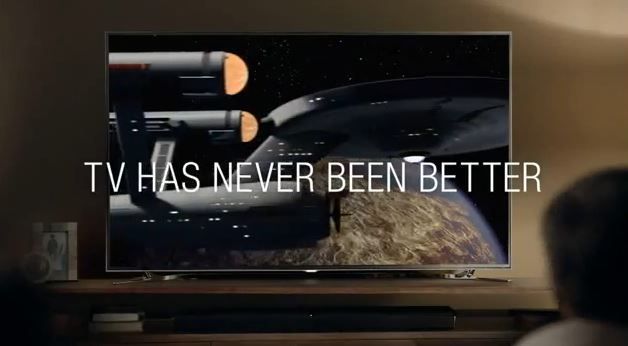When most people had 4:3 TV's some disliked WS releases. (Even when I had a 4:3 TV I favoured films in WS). Now that most have WS TV's 4:3 is disliked.
Essentially true, but from a videophile's point of view it's a little more complicated.
James Cameron authorized the 4:3 release of
The Abyss (hopefully by the end of this year
finally available in HD on Blu-ray) both in widescreen (i.e. 2.35:1 letterboxed) and a director-approved Pan & Scan 4:3 version.
His argument (in a letter accompanying the Pan & Scan LaserDisc box): film has a resolution exceeding current FullHD and 4K UltraHD. Go for letterbox and you'll even loose more picture resolution, facial "body language" and other details get lost.
Go for Pan & Scan and you get optimal detail resolution within the restraints of 4:3, but you'll loose picture information left and right.
Given the FullHD resolution of contemporary flat screens, we get the original 4:3 TNG picture but not the full image resolution (in terms of overall picture detail).
I think the general issue many fans would be having with a reformatted and trimmed widescreen release of TNG is that they would know and possibly notice that previous picture information is missing. I sympathize.
When Cameron's
Titanic was released in 2.35:1 widescreen I knew that that film had been shot with Super35 cameras and that the black bars at the top and (especially) bottom were covering up image information, which wasn't fully revealed until the 3D "open matte" re-release version.
I don't know if I still want to watch the "matted" 2.35:1 version.
Please don't feel offended but I think the inevitable loss of picture information is at the core of this debate on behalf of 4:3 since it began two years ago.
I frankly can't imagine the majority of 4:3 advocates stitting in front of their screens when watching TNG and marveling at the stunning image compositions of the TNG DPs...

Bob





